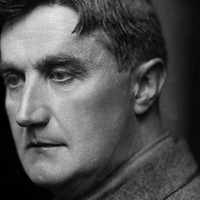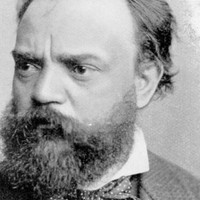The Lark Ascending
Sponsored By
- April 6, 2018

Sponsored By

The French composer Charles-François Gounod is best remembered for his 12 operas, especially his 1859 setting of Faust that remains a cornerstone of the repertory. In his wake, rising French composers including Saint-Saëns and Fauré felt empowered to separate themselves from the heavy influence of Germany and Richard Wagner. One forum for new French music was spearheaded by the young flutist Paul Taffanel, a transformative performer and teacher who ended up reinventing his instrument and the repertoire composed for it. In forming the Modern Society of Wind Instruments, Taffanel looked back a century to the model of the harmonie, a type of small wind ensemble beloved by Austrian aristocrats in Mozart’s day. It was for this group that Gounod composed his final piece of chamber music, the Petite symphonie for flute and pairs of oboes, clarinets, bassoons and horns.
Gounod’s compact symphony borrows key traits from 18th-century Classical style, including the slow introduction that prefaces the airy Allegretto portion of the first movement. The slow movement, to be played “at a walking pace” and “songlike,” recalls the singing Andantes perfected by Mozart. The flute is the star of this aria without words, but in true operatic fashion there are conversational asides that bring in other instrumental soloists.
The scherzo, with its jaunty meter and prominent horn calls, channels Haydn’s hunt-inspired romps. The finale shares Haydn’s sense of dynamic contrast and wit, and it demonstrates the same deft hand for contrapuntal layering that enriched Mozart’s finest scores. It was Mozart who first elevated the artistry of the wind ensemble and the festive Serenades they played; a hundred years later, the same joyful, transparent format offered a new path forward for Gounod and his French comrades.
Aaron Grad ©2017

The Conference of the Birds was commissioned by A Far Cry and premiered at New England Conservatory’s Jordan Hall in Boston, MA on January 13, 2017.
The Conference of the Birds is a 12th-century Sufi epic poem by the Persian poet Farid ud-Din Attar. It tells a story about the birds of the world who gather together in a time of uncertainty. Led by the hoopoe bird, they decide to set out on a long journey to find their king. Many birds desert or die along the journey, but after passing through valley after valley, the remaining 30 arrive at a lake at the top of a mountain. Looking in the water at their own reflection, they realize they are in fact looking at their king. I first came across it through an adaptation (“reinterpretation” might be a better description) by the brilliant Czech-American illustrator and author Peter Sís. This was one of the most beautiful books I had ever seen: an adult picture book with an unusual graphic sensibility, a concise and beautifully ambiguous text, and full-page illustrations of mysterious landscapes that carried surprising emotional weight. Attar’s original epic poem is an allegorical tale full of mystical parables. Numerous modern adaptations, including plays, children’s books and pieces of music, have been made that emphasize the story’s straightforward yet colorful narrative and moral lessons. But what drew me to Sís’s version, aside from the expressive, textural drawings which so suggested music, was the deep sense of loss in the pages. So many birds are left by the wayside during this journey towards truth and self-discovery. Does progress or attempted progress always come at a cost? What are we to make of the hoopoe who leads so many others to their deaths even as a few find enlightenment?
I initially thought about trying to turn the story into an opera, but I realized I was less interested in the narrative scope of the story than in the emotions and visceral energy of specific moments. I also knew I wanted to write music as Sís created his drawings, with strong gestures and lots of small figures combining to form large shapes. A string orchestra seemed perfect for creating solo lines that gathered into clouds of sound. I wrote The Conference of the Birds on a commission from A Far Cry, a self-conducted chamber orchestra based in Boston whose members rotate leadership positions in the group. Having gotten to know the players as peers and friends, I felt inspired to write music that allowed the individual personalities and playing styles of the players to emerge: each member of the ensemble has his/her own part. These parts join each other in different combinations, but just as quickly split up again. The leadership of the music, and the relationship of individuals to the group, is always changing. As I wrote I thought about the power of crowds, the motivating capability—both dangerous and inspiring—of leaders, and the contrasting values of individuality and unity, but I also thought about the way a chamber orchestra functions as an ensemble—how its members share leadership and make music together. The Conference of the Birds is about 25 minutes long and is in three movements. The final two are played without a pause.
Lembit Beecher ©2017
 Watch Video
Watch Video
In the sixteenth and seventeenth centuries, England produced some of the world’s finest composers, including Thomas Tallis (c. 1505-1585), John Dowland (1563-1626) and Henry Purcell (1659-1695). After Purcell, foreigners like George Frideric Handel and Franz Joseph Haydn dominated the local scene, and it took another 200 years for the next wave of major British composers to emerge. The dry spell finally broke around the turn of the twentieth century, led by Edward Elgar, Gustav Holst and Ralph Vaughan Williams.
Vaughan Williams understood that a thriving English music could not just mimic continental styles — even though he sought out Max Bruch in Germany and Maurice Ravel in France to study their crafts thoroughly. The seeds of Vaughan Williams’ distinctly British voice came, as he wrote in 1912, from the sounds of everyday life all around him, “for instance, the lilt of the chorus at a music-hall joining in a popular song, the children dancing to a barrel organ, the rousing fervour of a Salvation Army hymn, St. Paul’s and a great choir singing in one of its festivals, the Welshmen striking up one of their own hymns whenever they win a goal at the international football match, the cries of the street pedlars, the factory girls singing their sentimental songs.”
In 1914, Vaughan Williams drafted an initial version of The Lark Ascending for violin and piano, but then the 42-year-old enlisted to serve in World War I, leading to a four-year hiatus from composition. With input from British violinist Marie Hall (to whom the score is dedicated), Vaughan Williams completed two versions of this violin showpiece in 1920, one with piano accompaniment and the other scored for small orchestra.
The title and inspiration of The Lark Ascending came from a poem by George Meredith depicting the rising and circling of a skylark. The musical language captures the pastoral reverie of the poem, especially in the pentatonic flutters and graceful curlicues of the violin’s unmeasured cadenzas. With its radiant harmonies and nostalgic glimmer, it’s no surprise that The Guardian declared The Lark Ascending “Britain’s favourite piece of classical music.”
Aaron Grad ©2022

(Duration: 27 min)
Antonín Dvořák grew up in a small Bohemian village where his father ran an inn and entertained guests by playing the region’s quintessential folk instrument, the zither. After Dvořák moved to Prague to pursue a career in music, he scraped by any way he could — teaching piano, playing church organ, and gigging with a dance band on the viola, to name a few of the activities that supported his composing. He might have spent the rest of his life in obscurity had it not been for the intervention of a most influential champion, Johannes Brahms, who discovered the young Czech composer when judging a competition.
One work that Dvořák submitted for that competition was the Serenade for Strings that he had composed over twelve days in May of 1875. Brahms was so impressed that he forwarded a stack of scores on to his publisher, who soon commissioned Dvořák’s Slavonic Dances and launched his international career.
To composers in Wolfgang Amadeus Mozart’s era, the Serenade was a form of simple entertainment to be performed outdoors at public gatherings in the evening. By the nineteenth century, composers applied the term more generally to pieces of a pleasing, “night-music” character with a loose assemblage of movements, a format that suited Dvořák’s gift for melodic invention.
Most of the movements of the Serenade for Strings follow a three-part structure, with statements of a primary theme (or group of themes) separated by a contrasting middle section. The opening Moderato demonstrates this simple elegance, forgoing an introduction and developmental transitions, and instead moving without delay from one memorable melody to the next. Singable themes continue to unfurl in the Waltz, Scherzo and Larghetto, the last of which provides a rich and sentimental departure from the Serenade’s cheery disposition. In the Finale, playful quotations help to bring the work full circle.
Aaron Grad ©2024
Get driving directions and find nearby parking.
Find dining options close to the venue.
View seating charts to find out where you'll be seating.
Get driving directions and find nearby parking.
Find dining options close to the venue.
View seating charts to find out where you'll be seating.
